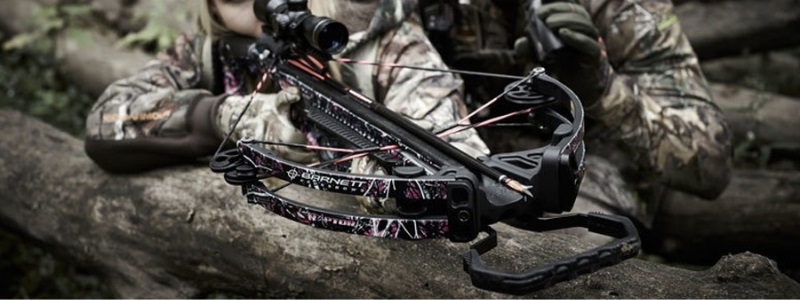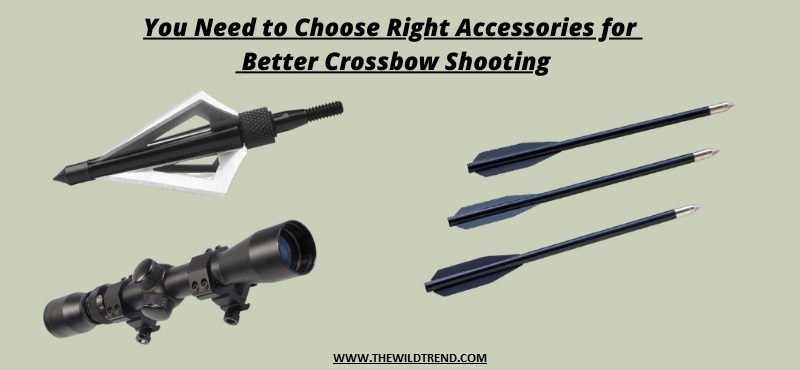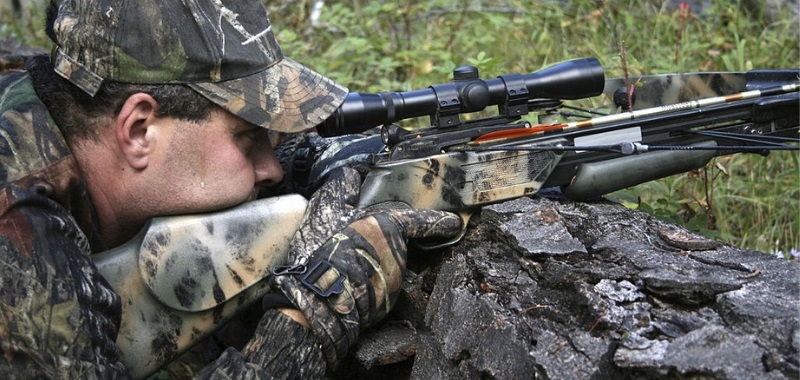Crossbow hunting offers an exciting and deeply rewarding outdoor experience that combines skill, patience, and a profound respect for nature. Unlike the cumbersome and imprecise crossbows of the medieval era, today’s crossbows are high-performance tools designed for modern hunting. With impressive speed, accuracy, and power, these advanced models can effectively bring down even large games.
In this guide, we’ll cover 12 essential tips to help beginners navigate the world of crossbow hunting. From understanding the key components of a crossbow to honing the techniques needed for a successful hunt, this resource provides a thorough overview to ensure a safe, enjoyable, and ethical hunting experience.
12 Tips for Crossbow Hunting for Beginners
Let’s see 12 crucial tips for crossbow hunting step by step.
1. Buy the best your wallet has
There is a notable difference between an entry-level crossbow and a high-end model. While budget-friendly crossbows offer a lower price point, they often sacrifice build quality, accuracy, and long-term reliability when compared to their more expensive counterparts.
For example, you can find a basic crossbow package, which typically includes a crossbow, a set of arrows and arrowheads, a telescopic sight, a jig, and a quiver, for as little as $100 to $200. However, a good quality entry-level crossbow usually starts in the $200 to $300 range. Investing in a higher-priced option ensures superior craftsmanship, better performance, and a more satisfying, long-lasting hunting experience.
2. Use a 120-pound crossbow to learn how to shoot

No matter whether you practice target shooting or hunting; it is crucial to choose the right crossbow. As a beginner, you should consider the shooter’s age. There are crossbow models designed especially for children who want to improve their marksmanship while having fun. Adults committed to learning crossbow shooting can start with a 120-pound draw weight. This type of crossbow provides a good balance of precision and ease of use.
3. Choose a higher Draw weight model
One of the primary distinguishing factors between different crossbows is the draw weight. High-performance models typically start around 175 pounds, though it’s important not to generalize. There are excellent crossbows with draw weights below 150 pounds that can still deliver impressive results. A higher draw weight tends to correlate with better power and performance, but it’s essential to choose a model that balances your strength and skill level with your hunting needs.
Manufacturers of both crossbows and compound bows are always trying to improve their flight accuracy and characteristics. They make their device faster to increase the weight of the draw. However, your crossbow should be able to accelerate the arrow to an initial speed of at least 300 feet per second so that you can hit your target precisely over long distances of over 90m.
4. Treat yourself to a good visor

Numerous budget-friendly options are equipped with basic sights or scopes, making long-range aiming challenging. Opting for a multiple crosshair or multi-red dot sight proves to be more effective for enhancing ease of aiming. These sights are available in various magnifications, which provide versatility for different shooting scenarios. Moreover, advanced sighting devices often feature auxiliary lines or points to facilitate precision when shooting over greater distances.
While simple aiming devices may suffice for fixed distances, around 20 meters, multi-red dot sights with multiple crosshairs enhance aiming accuracy and flexibility, especially for long-range shooting. For longer distances, try to compensate for the ballistic curve by holding it higher. However, Multi-range crossbow scopes are the most popular because they show you multiple illuminated points, each suitable for a specific distance.
5. Use arrows/bolts as good as possible
Very cheap arrows are usually not truly well made. They can break faster and also fly badly. So choose arrows that have already received good ratings and are specially designed for crossbow shooting, as the crossbow bolts or arrows are shorter than bow arrows. Also, make sure that the nocks are suitable for crossbow arrows and not designed for compound bows.
Arrows can be made of wood, aluminum, carbon fiberglass, or a mixture of aluminum and carbon. Beginners should use aluminum arrows first, as these are cheap and robust. If you’re ok investing a little more right away, you can get carbon arrows. Carbon Arrow is the best seller among the arrows on the market. It is extremely light and flies surprisingly quickly.
6. Get the right accessories

A good crossbow purchase often includes several additional accessories, such as bolts, spare parts, and a carrying case. One essential accessory for any crossbow hunter is a rope tensioning aid. Although you can manually cock a crossbow, doing so repeatedly—especially after 10-20 times—can leave your hands sore and fatigued. Tensioning aids, starting around $20, make cocking much easier and more efficient.
Another must-have accessory is a quiver, which provides a safe and space-saving way to transport your bolts. Finally, you’ll need a suitable bag for your crossbow. This will protect your equipment and give you enough storage for everything you need at the shooting range.
Legally, carrying a crossbow in public is allowed according to the Weapons Act. However, for practicality and discretion, it’s best to use a proper carrying case. After all, you wouldn’t want to draw unwanted attention by sitting on public transport with a crossbow in hand!
7. Only shoot where allowed
Remember, a crossbow is a weapon. Always be aware of this phenomenon and constantly keep in mind that such a bolt flies at over 300 km / h and can kill someone with ease. It is therefore best to ALWAYS go to the nearest shooting range or shooting club to train. Appropriate safety measures have already been taken there and you can concentrate fully on the shooting.
If you don’t have this option, you should shoot where there are no people. Large hills that are easily visible are always suitable. You can then place your target directly on the slope so that arrows that are not hit disappear into the ground and do not injure anyone.
8. Take care of your fingers

Never grasp the guide rail when shooting. The jumping tendon could injure or even break your finger. In addition, you should always hold your crossbow by the handle and make sure that your fingers cannot get in the way of the arrow or the string. Just as your fingers are less able to withstand an impact with the string, your crossbow cannot withstand a shot without an arrow very well. With this so-called dry shot, all the energy from the tendon goes back into the limbs, which in the worst case can lead to the limbs breaking.
9. Get a feel for the trigger
Every crossbow comes with a unique trigger feel, and it’s crucial to familiarize yourself with it through repeated practice. You should shoot your device enough times to know exactly when the arrow will release, allowing you to build consistency and confidence. It’s also a good idea to try shooting with and without gloves to see which option feels more comfortable and offers better control. This experimentation helps you determine your personal preference and improve your overall shooting experience.
10. Practice makes perfect
The saying “practice makes perfect” also applies to crossbow hunting. Shoot from a surface (table, trestle, sandbag, bipod, etc.) on which the crossbow rests. Use these exercises to practice shooting with precision and to get a feel for the trigger. When you know your crossbow well, you will get better results.
However, certain fundamentals remain unchanged.
11. Take care of your crossbow regularly
Crossbow is a mechanical device that requires regular maintenance to keep it working as it did on the first day. This means that you should check all moving parts like the CAM system and the tendons for wear. This is very important because enormous forces act on the individual parts with every shot.
It’s important to replace any parts of your crossbow at the first sign of tendon fraying or other unusual wear and tear. Proper maintenance can help reduce the need for repairs. After every session, clean your crossbow thoroughly and apply wax to the tendons to keep them supple. Additionally, lubricate the guide rail regularly with oil or specialized care products after every 100 to 150 shots.
12. Relax the crossbow
Always remember to relax the device after a day of hunting. This can be accomplished by using equipment called a bandage or shooting a practice arrow at a target. To prevent the string and the bow from breaking, it is imperative not to relax the bow manually by pulling the string dry without the arrow.
FAQs
What is the maximum distance to shoot with a crossbow?
Similar to many hunting crossbows, the practical maximum distance for an accurate and lethal shot typically hovers around 30 meters (100 feet). While it’s possible to maintain decent arrow grouping at greater distances, the striking force significantly decreases beyond this range. Furthermore, the risk of errors significantly rises as the meters increase, irrespective of the crossbow’s power.
Various factors increased the likelihood of missed shots beyond the optimal range. These include unexpected movement of the animal, shooting angle variations, trembling or nervous release, inaccurate assessment of distance, and anticipation of the shot. Understanding these variables is essential for responsible and ethical hunting, helping to minimize the chances of errant or poorly placed shots.
How important is the choice of arrows?
Choosing the right arrows is crucial for achieving consistent group shots and maintaining good impact force. You should use the original arrows recommended by the manufacturer. If that’s not possible, consult the manufacturer’s manual to determine the minimum weight required for safe shooting. Using arrows that are too light can result in an empty shot, which can be dangerous for the shooter and may cause serious damage to the crossbow.
If you decide to use different arrow models, ensure you know the weight of the arrows and points you typically use. This knowledge will help you find a suitable alternative in-store that closely matches the specifications. Keep in mind that changing arrow types may necessitate some readjustments to your scope or sighting system to maintain accuracy.
Is it better to have a crossbow with or without a pulley?
The choice of a pulley crossbow will therefore be more relevant to move it in the forest more easily. The main advantages of crossbows without a pulley are their simplicity and the ability to change the string yourself. For a hunter who does fine hunting, the ideal is a narrow model that takes up less space. However, the weight and power of the two types of crossbows are often equivalent in recent models. It is generally by supporting and handling different models that the final choice is made, according to individual tastes, budget, and needs.
Is it better to have fixed or retractable broadheads?
The choice between fixed and retractable broadheads in crossbow hunting ultimately depends on individual preferences and specific hunting scenarios. Fixed broadheads are known for their accuracy and reliability, as they maintain consistent flight paths once properly tuned. They offer excellent penetration due to their solid construction and larger cutting surfaces.
On the other hand, retractable broadheads, with their expandable design, can provide a more aerodynamic profile during flight and minimize the impact on arrow trajectory. Some hunters appreciate the larger wound channels created upon impact, thanks to the blades opening up. However, it’s important to consider the potential for mechanical failures with retractable broadheads, as these types of arrows have moving parts that must deploy correctly upon impact with the target.
What is the proper way to cock a crossbow?
Follow the manufacturer’s instructions for your specific crossbow model. Many crossbows come with a cocking device for safety and ease. Always ensure that safety is engaged during cocking.
What should I do if I wound an animal but can’t recover it?
If you suspect a non-lethal hit, wait patiently and consult tracking tips. If recovery seems unlikely, report the incident to local wildlife authorities. Ethical hunting involves making every effort to retrieve wounded game.
Last Tips for Beginner Crossbow Hunters
Regular maintenance of your crossbow not only enhances its initial speed but also helps preserve the string, leading to noticeable improvements in performance for beginner crossbow shooters. Although it’s common for hunters to leave their crossbows cocked for extended periods, this practice should be avoided, especially when starting out. Keeping the string in a drawn position for too long is dangerous and can damage the limbs of the bow, as the crossbow mechanism isn’t designed for prolonged tension.
Beginner hunters using smaller crossbows should regularly inspect the condition of the string and remember to replace the serving when necessary. To prevent damage to the crossbow in case of a string failure during shooting practice, it’s wise to consider replacing an old string before it breaks.
We hope this article provides all the information you need. If you have any questions, feel free to leave a comment below, and we’ll be happy to assist!
